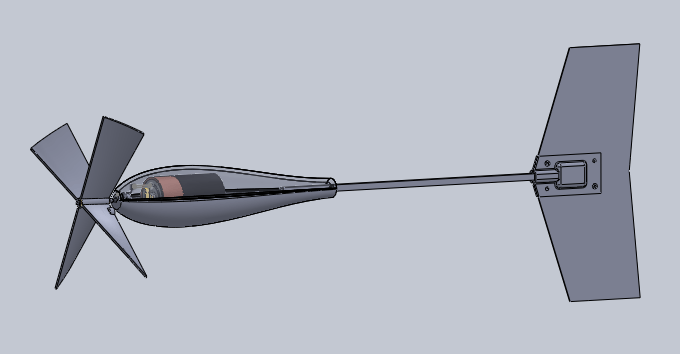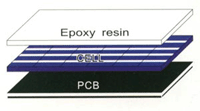
Pioupiou piles
La last week, I realized that the solar panel was not necessarily the best solution.
So I sent out a survey to all KissKissBankers, to ask them to vote among the following 3 options:
- Solar panel + rechargeable battery to be changed every 2-3 years.
(RAM type. Replacement to be ordered on the Pioupiou website. Cost ~ 10 €) - “Military” non-rechargeable battery, to be changed every 3-4 years.
(Li-SOCl2 or Li-MnO2 type. Replacement to be ordered on the Pioupiou website. Cost ~ 20 €) - “Classic” non-rechargeable battery, to be changed every year
(Alkaline “Duracell” type. They can be found everywhere. Cost ~ 5 €)
results:
Solar panel + battery : 34 votes
Pile « military " long duration : 46 votes
Classic stack : 61 votes
I had lots of interesting suggestions. You can find all the details: here.
Chosen solution
I'm going with the non-rechargeable battery option. The Pioupious will automatically be supplied with a " military », with an autonomy of approximately 3 to 4 years. When this battery is empty, it can be replaced with a D / R20 format battery of your choice: alcaline 1,5V, or lithium 3V (LiMnO2) ou lithium 3,6V (LiSOCl2). It's up to you to choose according to your constraints. It should also work with rechargeable batteries, but I don't recommend it because the battery life will be much shorter.
To ensure good contact and prevent corrosion, the battery connectors will be plated with a very thin layer of gold.
As a result, the Pioupiou without a solar panel can be a little more aerodynamic, like this:
Why not solar?
" Why make it simple when you can make it complicated ? »
Our goal is to have the most reliable device possible. So generally speaking, the less stuff on it, the less stuff that will fail.
There are 4 things that are problematic with the solar solution:
Panel aging
The photovoltaic cells themselves have a lifespan of more than 20 years. But they are very fragile, and must be protected.
In large solar panels, we often have an aluminum frame and a glass pane. The glass is UV resistant, so no worries.
On the other hand, for small panels like ours, it is not possible to have a glass pane. There are then two types of panels: Epoxy or PET.
Epoxy panels are embedded in epoxy resin.
The problem is that epoxy doesn't like UVs at all. As a result, it becomes opaque and the panel loses its effectiveness. This solution is often chosen for toys and indoor applications. Lifespan: 1 to 2 years.
PET panels are coated with a layer of PET.
PET is the transparent plastic in soda bottles. This solution provides better quality panels than epoxy. More waterproof and less sensitive to UVs, it is more suitable for outdoor applications. But again, its lifespan is limited: between 2 and 5 years.
There are probably other solutions, but they are not standard. And therefore with a cost that is too high compared to the overall budget of Pioupiou. Our goal is to make a product accessible.
Assembly complexity
Let's say we find a panel that lasts long enough. It will have to be integrated into the box. In particular, it will be necessary to manage the tightness of the system. I'm not sure we can just stick it to SikaFlex.
Environmental
With a panel, we are dependent on what is happening outside. What happens if snow or dust gets on it?
Batteries
But I think the real weak point is that if you have a solar panel, you also need rechargeable batteries...
Why not rechargeable batteries?
In general, our Pioupiou will be exposed to difficult temperatures. Especially the cold, winter in the mountains.
Li-ion / Li-po batteries
For "home" use, they have good performance and a long lifespan.
But they behave less well in low temperatures. It's the GoPro syndrome that never has a battery when you go skiing...
The big problem is that it is not possible to recharge them when it is less than 0°C. It's related to the internal chemistry of these batteries, and it damages them. As a result, not very practical for spending the winter outside…
Batteries Ni-MH, Ni-CD
These batteries are sensitive to cold and have a very high self-discharge rate. That is to say that they empty themselves over time – even if Pioupiou is not on. Like our old VHF.
Batteries have lead
High self-discharge, especially when cold. That's why we need a big solar panel on our current beacons.
Rechargeable Alkaline Batteries (RAM)
These are a certain type of alkaline battery, designed to be recharged. But only if they have been discharged very little, which is not a problem since Pioupiou consumes very little.
The advantage is that they resist the cold a little better than other batteries. Let's say down to -10°C. They also have a very low self-discharge rate.
This is what I use in the current Pioupious (which seem to be wintering well so far). It's the best compromise I've found.
On the other hand, the lifespan is reduced: 2 or 3 years max.
What batteries?
Lithium
The most efficient. Not only do they have a long battery life, but they are also very resistant to extreme temperatures down to -50°C. They are reliable and do not leak. This is why they are used in military and space equipment, but also for applications designed for autonomy of up to 20 years: alarm systems, water or gas meters, etc.
On the other hand, they are more toxic than alkaline batteries and must therefore be recycled. Two solutions: they can be deposited in the "battery boxes" of the supermarkets, or I will provide you with free pre-paid packaging to send it back to me.
Pioupiou will probably have a battery life of 3 to 4 years with these batteries.
alkaline
Advantages: they are very economical and can be found everywhere.
They hold the cold a little less well, but it should go down to -10°C.
It will still be necessary to avoid stacks too much “ cheap which tend to sink.
With an alkaline battery, battery life should be approximately one year.


8 thoughts on “ Pioupiou piles »
On the Davis stations the solar panels feed a capacitor
A good old polluting battery, instead of a solar panel??? At the time of solar energy and addressed to an outdoor activity that is said to be in harmony with nature!? I think I'm dreaming.
The solar panel and battery solution to be changed every 2-3 years is not necessarily greener. We do as we can.
The project being open, if you know how to offer me a reliable solution over the long term, compatible with the constraints of the product and turnkey, I'm interested.
A good old battery whose production and recycling channels are highly controlled, instead of a solar panel stuffed with silicon and rare metals, whose recycling is absolutely not guaranteed (especially given the small size of the panel).
Interesting to read: http://www.enerzine.com/1/12507+recyclage—que-faire-des-panneaux-photovoltaiques-usages+.html
"Photovoltaic modules are currently not part of the devices covered by the RoHS directive [Restriction of the use of certain hazardous substances] - and the revision of the directive carried out on July 21, 2011 has still not taken into account the photovoltaic panels in its list of equipment, so as not to penalize the development of the sector. However, photovoltaic panels should enter the list of the directive in 2018."
“Small [photovoltaic] modules have so far been treated like glass or rubble, which from an ecological point of view is serious.”
the solar panel could be on the tail (it should be a little bigger to compensate for the bad orientation), coupled with a small supercapacitor http://en.wikipedia.org/wiki/Supercapacitor in the body of the pioupiou, no more problem of aging of the battery following the charge and discharge cycles.
Hello, I have been an inveterate vaper for five years and also a log sawyer… For my job I have to deal with extreme conditions of temperature and humidity that vary from one extreme to another throughout the year. I use standard 18350 li-ion batteries (Chinese model Ultrafire/tangsfire) for my mod. These batteries are put to the test, both by the aforementioned conditions and by discharges due to the intensity of my device and obviously dust and heavy shocks (like falling from a five-meter-high sorting gate directly on the concrete… In short, she picks up their mothers seriously!
To recharge them I use an intelligent charger with manual programming of the different charging modes (charge, discharge, discharge refresh, quick test).
This charger is equipped with a backlit LCD screen, four racks, a fan and also allows you to select the charge/discharge intensity of each of the batteries in mA.
I have been using the same batteries for almost two years and they total nearly two hundred recharges each.
Battery price: $6 per pair fdp in
Charger price: 55€ fdp in
Only one of these batteries in 26650 5Ah could probably suit the needs of the pioupiou, a cheaper alternative?
Do not hesitate to contact me for more information, photos and to send you the links of the sales. I would be happy to help you.
Peep your,
Antoine
600 refills each, and sorry for the autograph photos, smartphone requires… A+